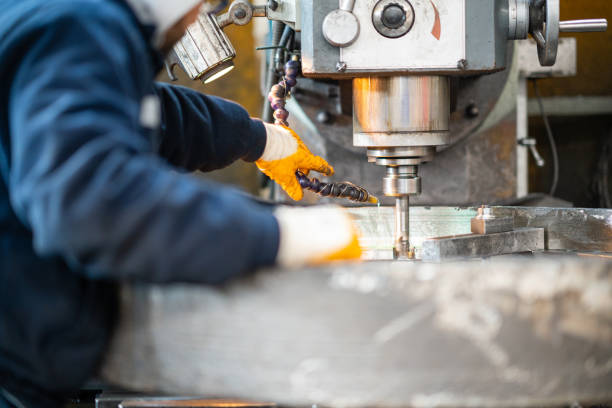Industrial Machines: Evolution, Impact, and Future Prospects

In the vast landscape of technological progress, industrial machines stand as the stalwart pillars of modern civilization. From the early mechanization of the Industrial Revolution to the sophisticated automated systems of the present day, these machines have continually reshaped the way we live, work, and interact with the world around us.
Evolution of Industrial Machines
The roots of industrial machines can be traced back to the dawn of the Industrial Revolution in the late 18th century. It was during this transformative period that manual labor began to be replaced by mechanized processes, leading to unprecedented advancements in manufacturing, agriculture, and transportation. The invention of the steam engine by James Watt in 1769 marked a watershed moment in the history of industrialization, providing the power source that drove early machines and factories.
Throughout the 19th and 20th centuries, industrial machines underwent a rapid evolution, fueled by innovations in engineering, materials science, and automation. The advent of electricity revolutionized manufacturing processes, enabling the widespread adoption of electric motors and assembly line production. This era saw the rise of iconic machines such as the cotton gin, the steam locomotive, and the assembly line robot, each contributing to the relentless march of progress.
The latter half of the 20th century witnessed the emergence of computer-controlled automation, ushering in the era of industrial robotics and programmable logic controllers (PLCs). These advancements revolutionized manufacturing by enabling greater precision, efficiency, and flexibility in production processes. From automotive assembly plants to semiconductor fabrication facilities, industrial robots became indispensable tools for modern industry, capable of performing a wide range of tasks with speed and accuracy.
Impact of Industrial Machines
The impact of industrial machines on society has been profound and far-reaching, fundamentally altering the way goods are produced, distributed, and consumed. One of the most significant consequences of industrialization has been the rise of mass production, which has led to increased productivity, lower costs, and higher standards of living for millions of people around the world. By automating repetitive and labor-intensive tasks, industrial machines have freed human workers to focus on more complex and creative endeavors, driving innovation and economic growth.
Moreover, industrial machines have played a crucial role in shaping the geopolitical landscape, driving the expansion of global trade and commerce. The ability to produce goods on a massive scale has facilitated the rise of multinational corporations and supply chains spanning continents, creating new opportunities for collaboration and competition in the global marketplace. However, this interconnectedness has also exposed vulnerabilities, as demonstrated by the disruptions caused by events such as natural disasters and pandemics.
Furthermore, industrial machines have had significant environmental implications, both positive and negative. While automation and efficiency improvements have helped reduce waste and resource consumption in many industries, the widespread use of fossil fuels to power industrial machinery has contributed to pollution and climate change. As society grapples with the urgent need to transition to more sustainable forms of energy and production, industrial machines will play a pivotal role in driving innovation and driving towards a greener future.
Future Prospects of Industrial Machines
Looking ahead to the future, the trajectory of industrial machines is marked by continued innovation and evolution. Advances in artificial intelligence, robotics, and additive manufacturing are poised to revolutionize manufacturing once again, ushering in the era of Industry 4.0. Smart factories equipped with interconnected sensors and autonomous robots will enable real-time monitoring and optimization of production processes, leading to unprecedented levels of efficiency and flexibility.
Moreover, the advent of 3D printing technology promises to decentralize manufacturing and empower individuals and small businesses to produce custom-made goods on demand. From personalized medical devices to bespoke consumer products, 3D printing has the potential to democratize production and disrupt traditional supply chains. Similarly, advances in nanotechnology hold the promise of creating new materials and manufacturing techniques with unprecedented properties and capabilities.
However, the future of industrial machines is not without challenges and uncertainties. The ongoing debate surrounding automation and job displacement highlights the need for policies and initiatives to ensure that the benefits of technological progress are shared equitably across society. Moreover, concerns about data security, privacy, and ethical implications loom large as industrial machines become increasingly interconnected and autonomous.
Conclusion
Industrial machines have been instrumental in driving human progress and shaping the course of history. From the mechanized looms of the Industrial Revolution to the automated assembly lines of the present day, these machines have continually pushed the boundaries of what is possible, transforming the way we live, work, and interact with the world around us. As we stand on the cusp of a new era of technological innovation, the future of industrial machines holds both promise and peril, challenging us to harness their power for the benefit of all humankind.
